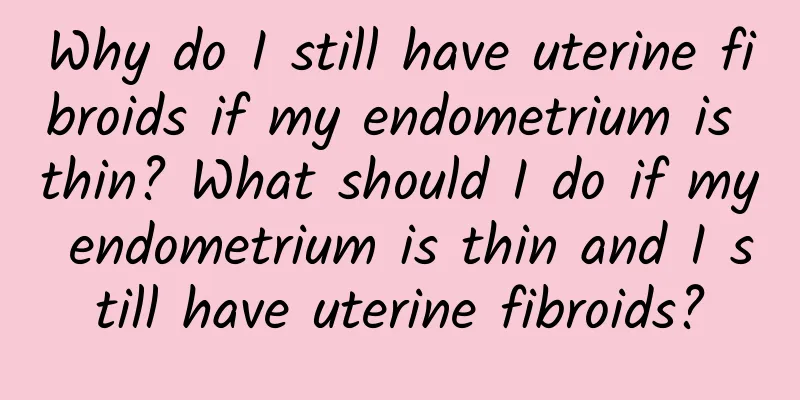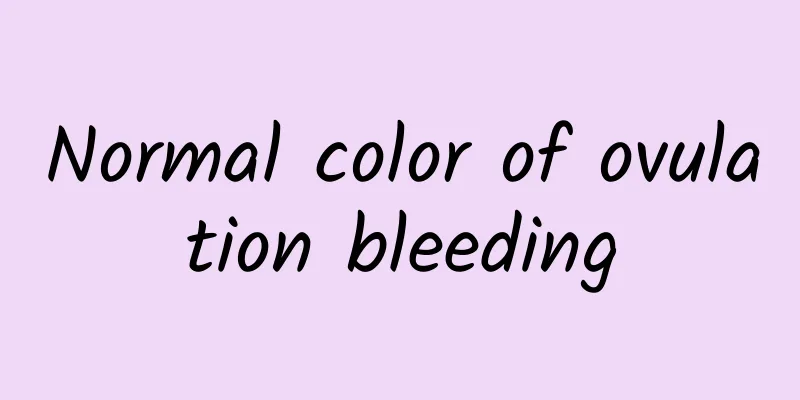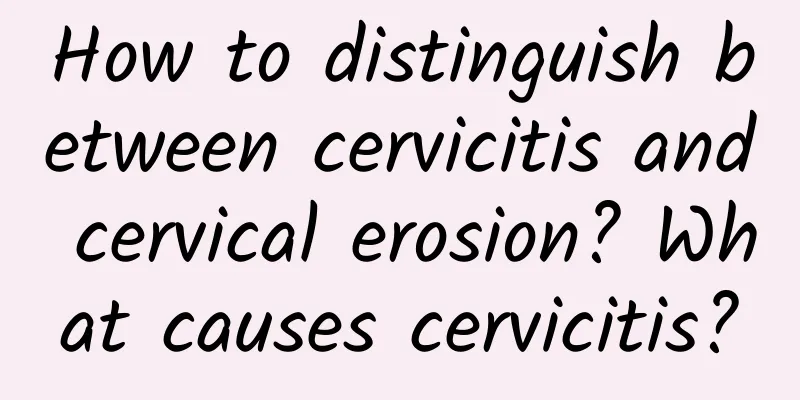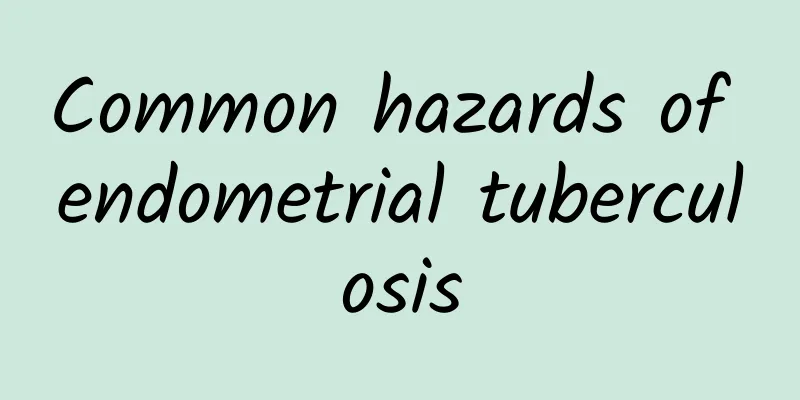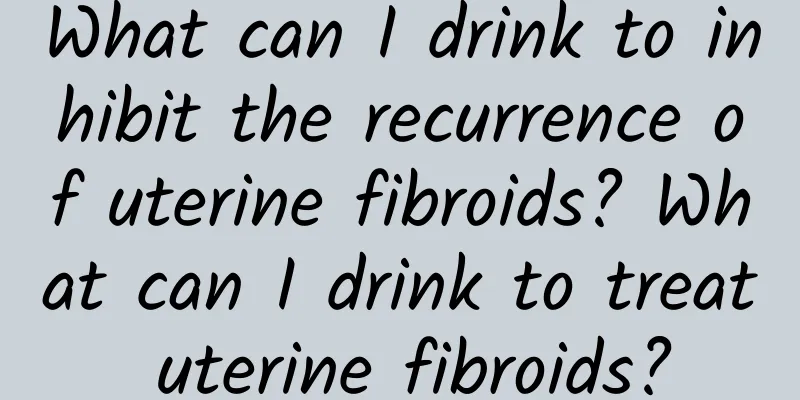What are the treatments for uterine fibroids for women who are prone to uterine fibroids?
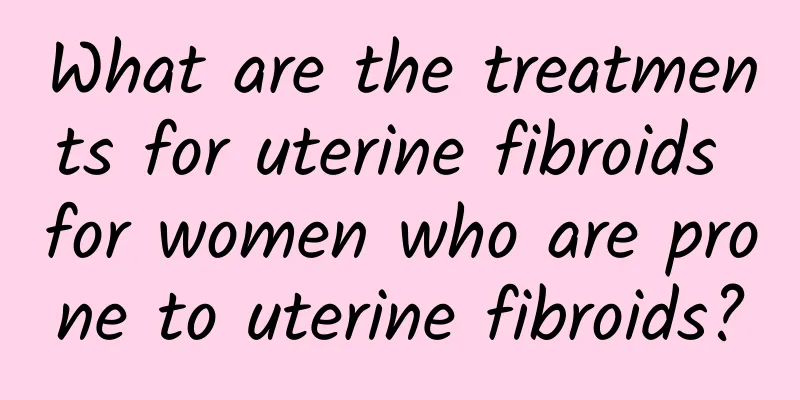
|
Uterine fibroids are the most common benign tumors in women. They are composed of smooth muscle and connective tissue, so they are also called uterine leiomyoma. Common symptoms include uterine bleeding, abdominal mass, vaginal discharge, bladder and rectal compression. The origin of uterine fibroids and the mechanisms that promote their growth remain poorly understood. It is currently believed that the transformation of myometrial cells into fibroids may involve a complex interaction between somatic mutations of normal myometrium, sex hormones, and local growth factors. Due to people's lack of correct understanding of uterine fibroids, many women panic when they hear that they have fibroids in their uterus; some patients suffer from anemia due to uterine fibroids, or even have serious conditions, but are still unwilling to undergo surgery. In fact, uterine fibroids are a benign tumor. Patients with uterine fibroids should first consider how to "coexist" with the disease while ensuring the quality of life. Most women diagnosed with uterine fibroids have neither symptoms nor surgery. However, some patients with uterine fibroids will be accompanied by anemia or compression symptoms, making it difficult to ensure a normal life, not to mention "coexistence" with uterine fibroids. In this case, surgical treatment should be considered. Traditional Chinese medicine also has certain advantages in the treatment of uterine fibroids, and patients can make a comprehensive choice. In addition, if patients with uterine fibroids are preparing to become pregnant, it is best to consider some of the effects of uterine fibroids on pregnancy and childbirth, as well as the effects of pregnancy on uterine fibroids, that is, asymptomatic. What are the causes of uterine fibroids? What are the causes of uterine fibroids? Let's learn from the following article. 1. Sexual intercourse during the recovery period of pregnancy can easily lead to uterine fibroids. Sexual intercourse is prohibited in the early stages of pregnancy and two months before delivery, otherwise it will lead to miscarriage or premature birth and damage the uterus. Therefore, this is one of the causes of uterine fibroids. 2. The cause of uterine fibroids is related to sexual dysfunction. If women indulge in sex or minors start sex, it will damage their physical and mental health and easily lead to diseases such as cervical erosion and uterine fibroids. 3. Long-term unclean sex life is also a cause of uterine fibroids. Not paying attention to hygiene during sex. Pathogens can enter the uterine cavity through the vagina and cause endometrial infection. In addition, the stimulation of male smegma on the cervix is one of the causes of uterine fibroids. Three types of women are prone to uterine fibroids Sexual life disorders: Normal sexual stimulation can promote the normal functioning of neuroendocrine system, improve the body's hormone secretion and reduce the occurrence of fibroids. Childbearing women: Childbearing women cannot protect progesterone in a timely and effective manner and are prone to hormone-dependent diseases. Women with depression: Negative emotions such as depression are also important causes of uterine fibroids. Let’s look at the treatments for uterine fibroids. 1. Focused Ultrasound Therapy The temperature inside the tumor is raised locally to above 65°C, causing coagulative necrosis of the tumor and exerting a therapeutic effect. The treatment can shrink the fibroids and relieve symptoms. It is suitable for symptomatic uterine fibroids. There are no surgical scars after treatment, and the advantages are fast recovery after surgery. Side effects include skin burns, intestinal damage, hematuria, etc. 2. Follow-up Observation If the patient has no obvious symptoms and no signs of malignancy, regular follow-up observation can be performed. Expectant Treatment Expectant therapy is regular observation and does not require special treatment. It is mainly suitable for asymptomatic uterine fibroids, especially patients with a uterine size of <10-12 weeks of pregnancy. If they are near-menopausal women, it is expected that the fibroids will shrink naturally after menopause. In addition, some asymptomatic small fibroids found during health examinations are common in clinical practice, and patients often go to the doctor anxiously. These patients are diagnosed with uterine fibroids after careful examination and can be treated expectantly without surgical treatment. Review every 3-6 months, paying attention to whether there are symptoms during the period and whether the uterus is enlarged. Each follow-up requires a gynecological examination, supplemented by B-ultrasound. If symptoms of menorrhagia and compression occur during the follow-up or the fibroids grow particularly fast, surgical treatment should be performed. It is appropriate to use expectant treatment for asymptomatic uterine fibroids under the supervision of regular follow-up. IV. Drug Treatment (1) Commonly used androgen drugs include methyltestosterone (methyltestosterone) and testosterone propionate (testosterone propionate), which can inhibit the growth of fibroids. Pay attention to the dosage to avoid masculinization. (2) Mifepristone is a progesterone antagonist that has been clinically used in the treatment of uterine fibroids in recent years. It can reduce the size of fibroids, but the fibroids grow more after discontinuation of the drug. (3) Gonadotropin-releasing hormone agonist (GnRH-a) Commonly used GnRH-a in clinical practice include leuprorelin (Enanton), goserelin (Zorelaide), triptorelin (Dapiga), etc. GnRH-a should not be used for a long time and is only used for preoperative pretreatment, generally for 3 to 6 months, to avoid causing severe menopausal symptoms caused by low estrogen; small doses of estrogen can also be supplemented to resist this side effect. (4) Tamoxifen can inhibit the growth of fibroids. However, in some patients, uterine fibroids may increase in response and even induce endometriosis and endometrial cancer, so care should be taken. (5) Danazol is used for preoperative medication or treatment of uterine fibroids that are not suitable for surgery. Uterine fibroids may grow after discontinuation of medication. Taking danazol can cause liver damage and androgenic side effects (weight gain, acne, low voice, etc.). 5. Interventional treatment Interventional treatment occurred in the last century, mainly injecting embolic agents into the uterine artery to embolize the fibroid blood vessels, leading to ischemic necrosis in the fibroids. However, due to the rich blood supply of the uterus, the actual effect is not ideal. Gynecological clinics sometimes see some patients who found uterine fibroids during the cancer prevention survey. Some women think that uterine fibroids are "cancer tumors", so when I heard that there was a tumor on the uterus, I was very nervous and under great mental pressure. In fact, uterine fibroids are not terrible. It is the most common benign tumor in the female pelvis. The rate of malignant change is very low, only 0.3% to 1.39% of married women of childbearing age, and 39% of them are patients with uterine fibroids. 6. Surgical treatment (1) Myomectomy The surgery to remove uterine fibroids and preserve the uterus is mainly used for young women under 40 who want to retain their fertility. It is suitable for large fibroids; heavy menstruation; compression symptoms; infertility caused by fibroids; submucosal fibroids; fibroids that grow rapidly but do not become malignant. (2) Hysterectomy Hysterectomy is suitable for women with obvious symptoms, the possibility of malignant changes in fibroids, and no fertility requirements. Hysterectomy can be performed as a total hysterectomy or a subtotal hysterectomy. Women who are older are suitable for total hysterectomy. The possibility of cervical malignancy must be ruled out before surgery. (3) Uterine artery embolization The arterial catheter is directly inserted into the uterine artery, and permanent embolic particles are injected to block the blood supply to the uterine fibroids, causing the fibroids to shrink or even disappear. UAE is currently mainly suitable for uterine fibroids with symptoms such as anemia caused by abnormal uterine bleeding. When choosing interventional treatment for uterine fibroids, caution should be exercised, especially for patients with uncontrolled pelvic inflammation, patients who wish to retain fertility, arteriosclerosis, and contraindications to angiography should be listed as contraindications to this treatment. 5% of patients may have premature ovarian failure and rare pelvic infections after surgery. |
>>: What are the symptoms of uterine fibroids and how to treat uterine fibroids
Recommend
Timely treatment of cervicitis will not affect the couple's life
As we all know, cervicitis is very harmful. If yo...
Enjoy the authentic flavor! Eat this way to burn fat and lose weight easily
Preparing diet food requires blanching or removin...
How to treat different degrees of cervical erosion? Detailed explanation of the treatment methods for female cervical erosion
Cervical erosion is a gynecological disease. Its ...
Three treatments for threatened abortion
After the symptoms of threatened abortion occur, ...
How to care for endometrial tuberculosis in life
Gynecologists say that women with endometrial tub...
What are the harms of abortion? There are 5 major harms
There are many harmful effects of miscarriage, th...
Treatment of recurrent miscarriage
Many women may have experienced miscarriage, so w...
How to treat subserosal uterine fibroids How to use medication for subserosal uterine fibroids
Subserosal uterine fibroids are a type of uterine...
Are there any complications of premature ovarian failure?
Are there any complications of premature ovarian ...
Make your own nutritious low-fat meals! The amazing "chicken" and "garlic" are delicious and low in calories
Garlic fried chicken fillet with carrots, cabbage...
What are the symptoms of secondary dysmenorrhea?
Secondary dysmenorrhea is common in female friend...
What are the causes of cervical erosion? Five main causes of cervical erosion
Cervical erosion is actually caused by the invasi...
What to do if menstruation does not come at 45 years old
What should I do if my period doesn’t come at 45?...
Why is pelvic peritonitis prone to recurrence?
Many women know that if they suffer from pelvic p...
Successfully lost 43 kg! Japanese cuisine researcher shares 7 golden principles of "reduced sugar diet"
Saori Suzuki, a culinary researcher, was born in ...
